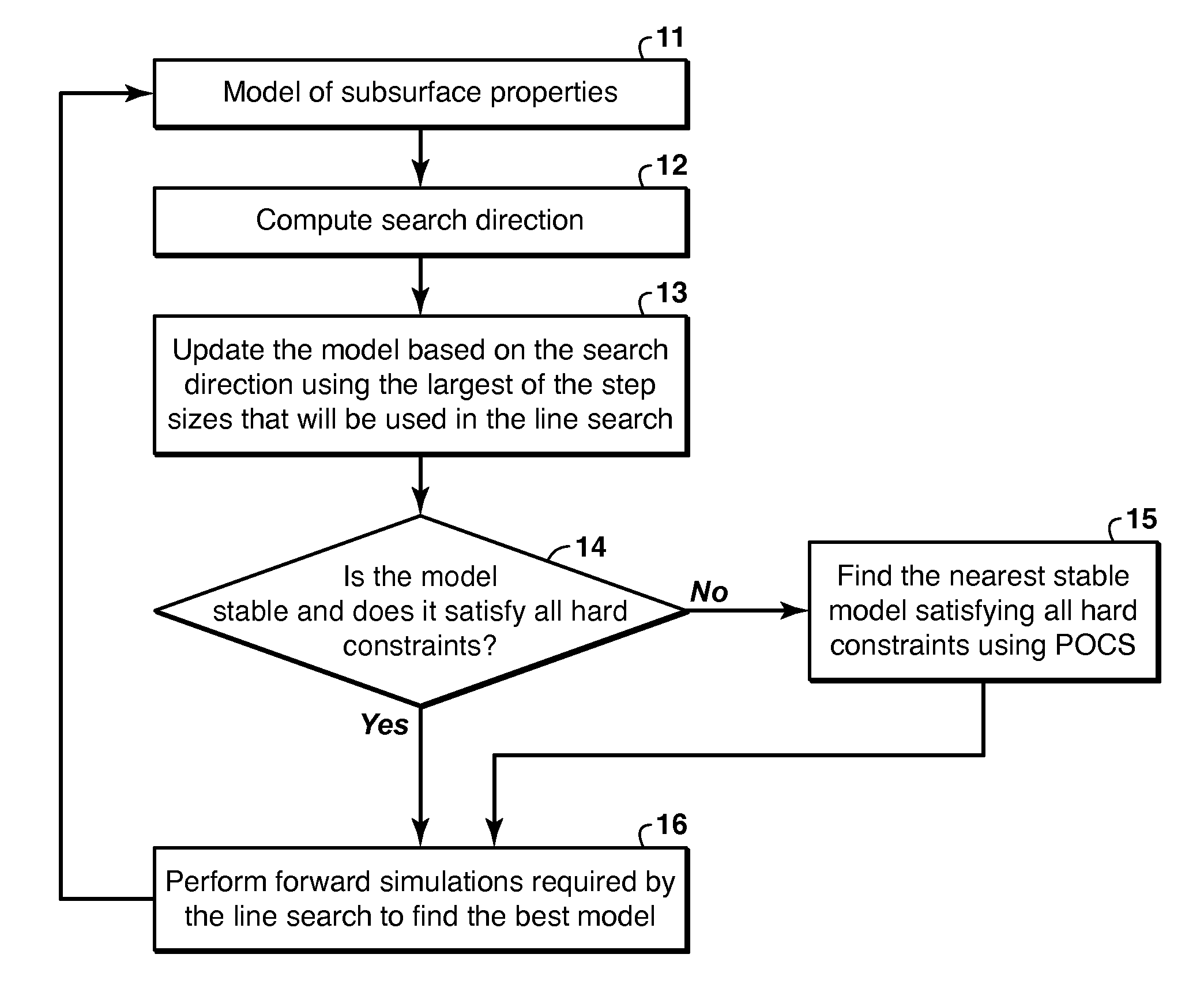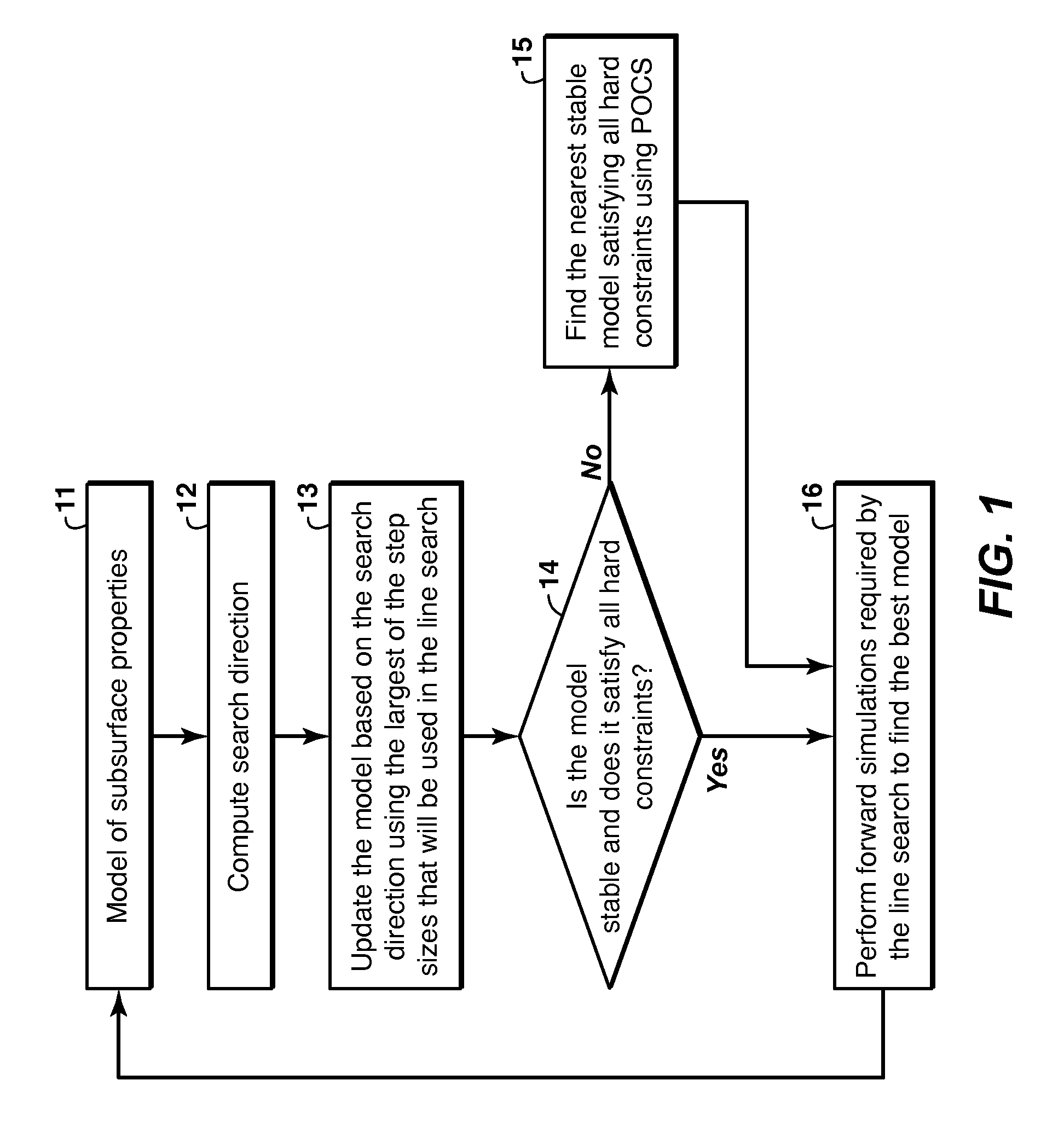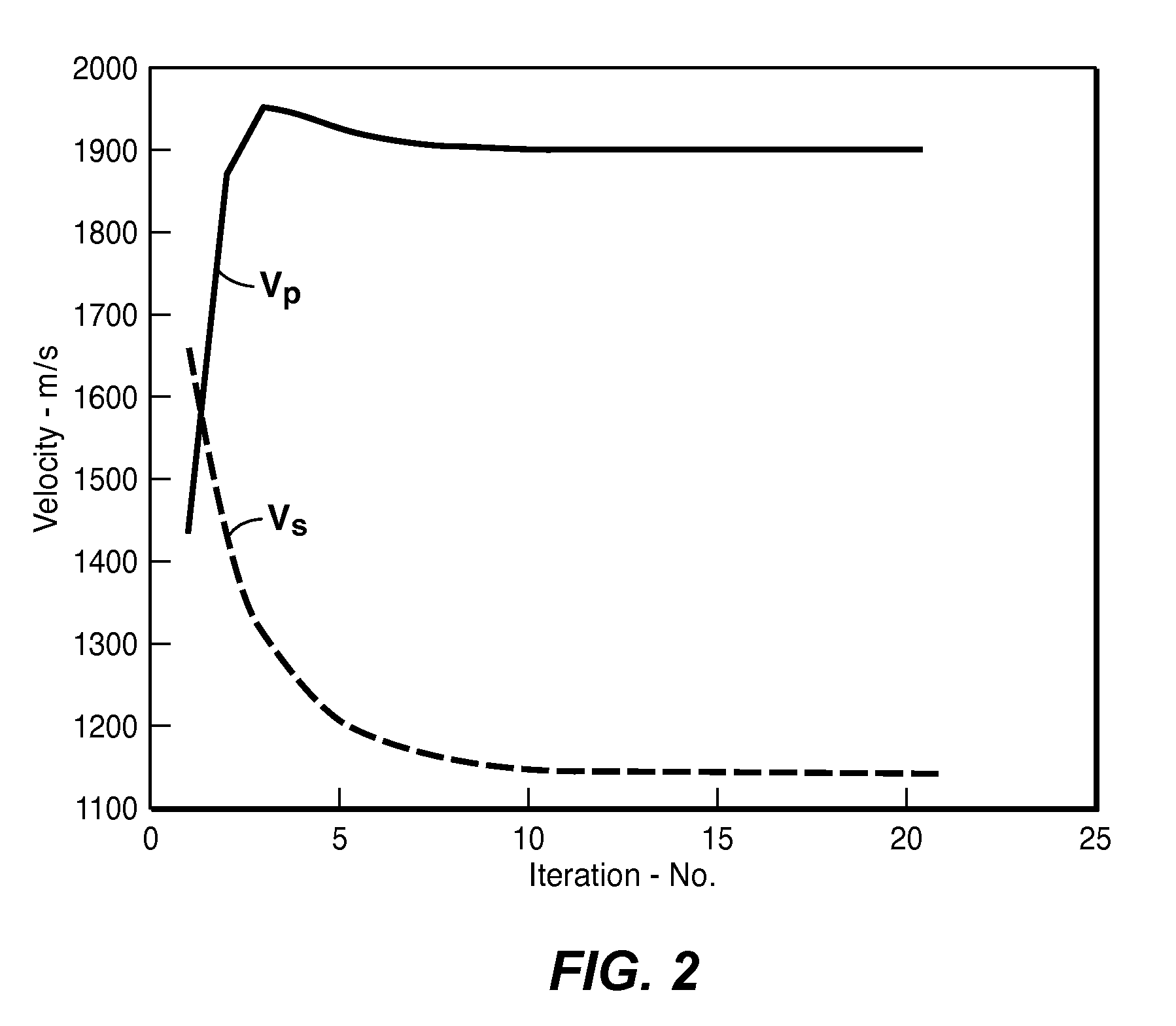Using projection onto convex sets to constrain full-wavefield inversion
a convex set and projection technology, applied in the field of geophysical prospecting, can solve problems such as physical infeasibility, unbounded growth, and no longer be represented
- Summary
- Abstract
- Description
- Claims
- Application Information
AI Technical Summary
Benefits of technology
Problems solved by technology
Method used
Image
Examples
example
[0022]Consider a 2D isotropic elastic medium. In this case the following matrix should be positive-definite at each spatial location:
[0023]M=(C3300λ0C55C5500C55C550λ00C33),
where C33=λ+2μ and C55=μ are elastic constants; λ and μ are Lamè parameters. Note that there are in fact several non-trivial constraints that the elements of matrix M must satisfy:[0024]1. M must be positive semi-definite;[0025]2. M14=M41=M11−2M22 (this follows from C33=λ+2μ and C55=μ).
We also choose to impose two more constraints (as an illustration of how to incorporate well-log and other a-priori information):[0026]3. M14≧λmin We arbitrarily choose λmin=106; and[0027]4. C33min≦C33≦C33max with C33min=15002 and C33max=19002.
[0028]Suppose we start with the following values of elastic constants: C33=2050000 and C55=2750000, which violate several of the conditions above. A mathematically rigorous way to convert the resulting matrix into a stable one is to apply the following sequence of projection operators:[0029]1....
PUM
 Login to View More
Login to View More Abstract
Description
Claims
Application Information
 Login to View More
Login to View More - R&D
- Intellectual Property
- Life Sciences
- Materials
- Tech Scout
- Unparalleled Data Quality
- Higher Quality Content
- 60% Fewer Hallucinations
Browse by: Latest US Patents, China's latest patents, Technical Efficacy Thesaurus, Application Domain, Technology Topic, Popular Technical Reports.
© 2025 PatSnap. All rights reserved.Legal|Privacy policy|Modern Slavery Act Transparency Statement|Sitemap|About US| Contact US: help@patsnap.com



